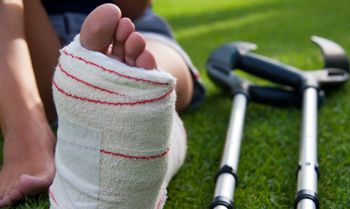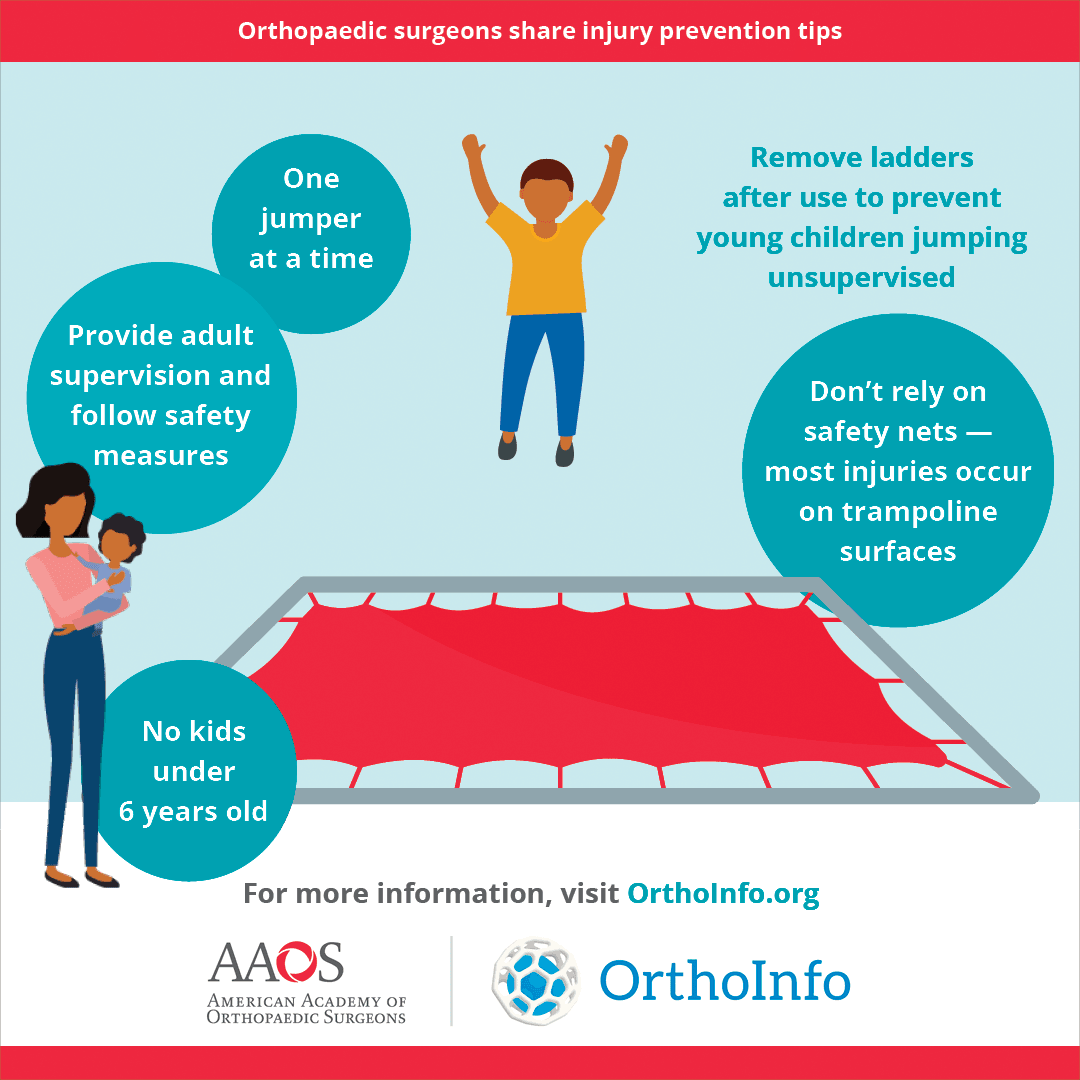Staying Healthy
Trampoline Injury Prevention
In recent years, trampoline jumping has grown in popularity as a recreational activity. Trampolines are now commonly found in backyards, outdoor playgrounds, jump parks, and physical education classes.
Not surprisingly, along with this rise in popularity has come an increase in the number of trampoline-related injuries. According to the U.S. Consumer Product Safety Commission, there were more than 300,000 medically treated trampoline injuries in 2018 — including more than 110,000 visits to the emergency room.
Causes of Trampoline Injuries
While most trampoline injuries occur on home trampolines, injuries sustained at jump parks tend to be more severe. This may be caused by the less coordinated falls and high-flying maneuvers often seen at these facilities.
Overall, more than 90% of trampoline injuries are sustained by children — mostly between the ages of 5 and 14. More than 75% of trampoline injuries occur when two or more children are jumping at the same time and collide.
Other common causes of trampoline injuries include:
- Falling on the trampoline mat, frame, or springs
- Attempting somersaults, flips, and other risky stunts that go wrong
- Falling off the trampoline onto the ground or another hard surface
Types of Injuries
Most trampoline injuries involve sprains or fractures in the arms and legs; however, more severe injuries are not uncommon. Landing incorrectly when performing somersaults or other high-risk maneuvers often leads to head and neck injuries that can be particularly devastating — sometimes resulting in paralysis or even death.
Tips for Safer Trampoline Use
To help reduce the number and severity of trampoline injuries, the American Academy of Orthopaedic Surgeons (AAOS) recommends the following guidelines:
Maintain Your Trampoline
- Before jumping, ensure that the trampoline's supporting bars, springs, and surrounding landing surfaces are covered in adequate protective padding. All padding should be in good condition and the correct position.
- Check equipment regularly for tears, pieces that are detached, and wear and tear. Throw away worn or damaged equipment if replacement parts are not available.
Supervise and Use Caution
- Provide careful adult supervision and instruction and ensure that jumpers follow proper safety measures at all times. This is important for both recreational trampoline jumping and for more structured trampoline activities—such as physical education classes, competitive gymnastics, and diving training.
- Do not allow a child younger than 6 years old to use a trampoline.
- Allow only one person at a time on the trampoline.
- Do not depend on a safety net enclosure alone to prevent injuries; most injuries actually occur on the mat of the trampoline.
- Make sure that spotters are present when participants are jumping.
- Do not allow participants to perform somersaults or other high-risk maneuvers without proper supervision and instruction. In addition, do not try these maneuvers without the proper protective equipment, such as a harness.
- Always place trampolines at ground level; a fall from a higher surface increases the risk of injury.
- Remove trampoline ladders after use to prevent young children from climbing in and jumping without supervision.
A Word on Bounce Houses
Like trampoline injuries, injuries related to inflatable bounce houses (sometimes called "moonwalks") are also on the rise. According to the U.S. Consumer Product Safety Commission, in 2018, there were more than 18,000 injuries associated with bounce houses treated in hospital emergency rooms.
Because bounce houses have a relatively soft, enclosed playing surface, many parents and caregivers view them as being safer than trampolines. However, studies show that the types and causes of injuries experienced in bounce houses are similar to those experienced during trampoline jumping. For this reason, parents and caregivers should set clear rules for safe jumping in bounce houses and supervise their children as closely as if they were jumping on a trampoline.
Peer-Reviewed by
AAOS does not endorse any treatments, procedures, products, or physicians referenced herein. This information is provided as an educational service and is not intended to serve as medical advice. Anyone seeking specific orthopaedic advice or assistance should consult his or her orthopaedic surgeon, or locate one in your area through the AAOS Find an Orthopaedist program on this website.










